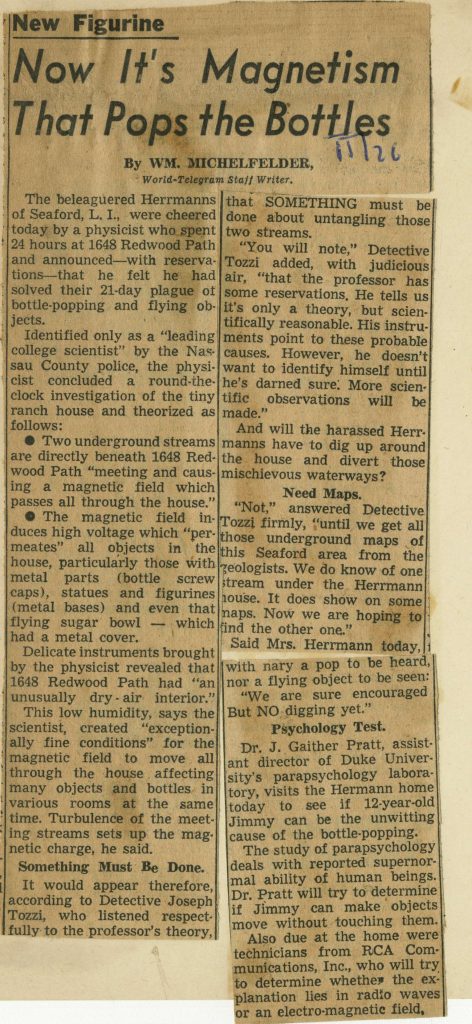
Among the most famous poltergeist stories is the Seaford Poltergeist, the inspiration for the 1982 film, Poltergeist. From February 3 to March 10, 1958, the Hermann family of Seaford, NY, experienced unusual phenomena — mysteriously opened bottles, an exploding bowl of sugar, an overturned bookcase, loud noises, and flying objects.


The Seaford Case gained media attention as investigators continued to theorize the potential cause of the paranormal activity. Some theories revolved around the son, such as the theory by John Layard, which Hereward Carrington and Nandor Fodor cite in Haunted People: Story of the Poltergeist Down the Centuries. This theory suggests that poltergeists are an external manifestation of internal tensions, produced unconsciously and involuntarily. Other theories include the idea that the sexual energies of a pubescent individual are externalized as vibrations, or that vibrations from physical objects, like jet planes, are transmitted through underground water.
Theories about the Seaford Poltergeist drew from beliefs and interests of the time, some of which are recognized as especially offensive and incorrect today. The article pictured below uses language that perpetuates harmful stereotypes that were used by European colonizers to justify the theft of land from and murder of Indigenous peoples.
Click on the articles to learn more

